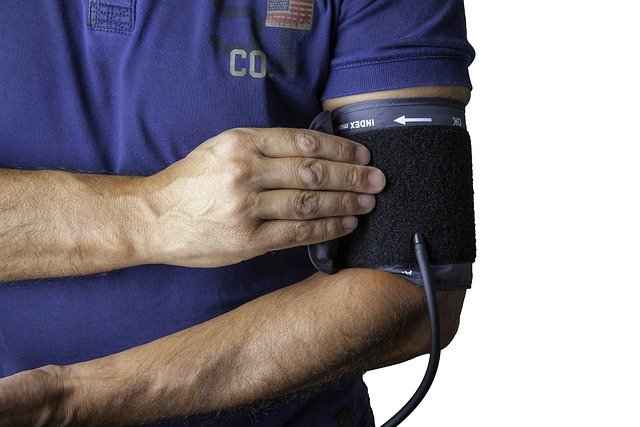Long-term weight maintenance: clinical follow-up and lifestyle strategies
Long-term weight maintenance after gastric bypass depends on structured clinical follow-up and sustainable lifestyle changes. This article outlines evidence-informed approaches to monitoring, nutrition, metabolic adjustments, common complications, cost considerations, and the role of telemedicine and multidisciplinary teams in supporting lasting outcomes.

Long-term weight maintenance following gastric bypass relies on ongoing clinical follow-up, consistent lifestyle adjustments, and timely management of metabolic changes. Patients commonly experience rapid initial weightloss, followed by a slower phase where adherence to nutrition plans, physical activity, and medical monitoring determines sustained results. A coordinated approach helps identify nutritional deficiencies, address malabsorption, and reduce the risk of complications while supporting recovery and quality of life.
This article is for informational purposes only and should not be considered medical advice. Please consult a qualified healthcare professional for personalized guidance and treatment.
Bariatric follow-up schedules
Regular followup after bariatric surgery typically begins with frequent visits in the first year—often at 2 weeks, 1 month, 3 months, 6 months, and 12 months—then transitions to annual reviews once weight stabilizes. These appointments assess weightloss trajectory, wound healing after laparoscopy, nutritional status, vitamin levels, metabolic markers (glucose, lipids), and mental health. A structured schedule helps clinicians detect early signs of complications, malabsorption, or inadequate weight maintenance and adjust care plans accordingly.
How does nutrition affect weightloss and maintenance?
Nutrition is central to long-term success. After gastric bypass, patients must adopt high-protein, nutrient-dense eating patterns with smaller, frequent meals. Lifelong vitamin and mineral supplementation is often recommended to prevent deficiencies due to reduced intake and malabsorption—common concerns after procedures that alter intestinal anatomy. Working with a registered dietitian experienced in bariatric nutrition supports individualized meal planning, monitoring of labs, and strategies to manage intolerances and avoid caloric pitfalls that can derail weightloss.
Addressing metabolic changes and malabsorption
Gastric bypass produces significant metabolic effects—improved insulin sensitivity and changes in gut hormones—that can aid weightloss and diabetes control, but it can also cause malabsorption of iron, vitamin B12, calcium, and fat-soluble vitamins. Regular metabolic monitoring (blood glucose, HbA1c, electrolytes, iron studies, vitamin panels) allows timely supplementation and dose adjustments. Recognizing signs of malabsorption, such as chronic diarrhea or anemia, and collaborating with gastroenterology or endocrinology are important for maintaining metabolic health.
Recovery, rehabilitation, and multidisciplinary support
Recovery involves physical healing, progressive activity increases, and behavioral adaptation. A multidisciplinary team—surgeons, primary care providers, dietitians, psychologists, and physiotherapists—supports both the surgical recovery and long-term behavior change. Psychological support addresses emotional eating, body-image adjustment, or mood changes that may affect adherence. Structured exercise programs and physical therapy can preserve lean mass, improve metabolic rate, and support sustainable weight management.
Managing complications and laparoscopy considerations
Laparoscopic approaches reduce immediate postoperative pain and shorten recovery compared with open surgery, but risks remain: anastomotic leaks, strictures, internal hernias, nutritional deficiencies, and dumping syndrome. Long-term followup helps identify complications early. Education on warning signs (severe abdominal pain, persistent vomiting, rapid weight regain, or severe nutrient deficiency symptoms) and clear pathways for urgent assessment can limit morbidity and support prompt interventions when needed.
| Product/Service | Provider | Cost Estimation |
|---|---|---|
| Roux-en-Y gastric bypass (procedure fee, facility, typical inpatient care) | Mayo Clinic (United States) | USD 25,000–35,000 |
| Laparoscopic Roux-en-Y gastric bypass (comprehensive program) | Cleveland Clinic (United States) | USD 20,000–40,000 |
| Gastric bypass (surgical package including pre-op evaluation and follow-up) | Johns Hopkins Medicine (United States) | USD 22,000–38,000 |
Prices, rates, or cost estimates mentioned in this article are based on the latest available information but may change over time. Independent research is advised before making financial decisions.
Costs vary by country, insurance coverage, preoperative assessments, length of hospital stay, and inclusion of multidisciplinary services (dietitian visits, psychological evaluation, followup labs). Telemedicine can reduce travel-related expenses and support more frequent touchpoints for followup visits, but not all followup tests or procedures can be delivered remotely.
Telemedicine and remote followup
Telemedicine offers convenient followup options for routine consultations, dietary counseling, and behavioral support, increasing access to multidisciplinary teams for those far from specialized centers. Remote monitoring tools (weight logs, glucose tracking, symptom questionnaires) can flag concerns between visits. However, in-person assessments remain necessary for physical exams, some laboratory draws, imaging, and procedures related to suspected complications or surgical revisions.
Conclusion Sustained weight maintenance after gastric bypass requires a blend of regular clinical followup, careful nutritional management, metabolic monitoring, and behavioral supports delivered by a multidisciplinary team. Awareness of malabsorption risks, potential complications, and realistic cost planning—augmented by telemedicine where appropriate—helps patients and clinicians craft durable, individualized strategies for recovery and long-term health.






